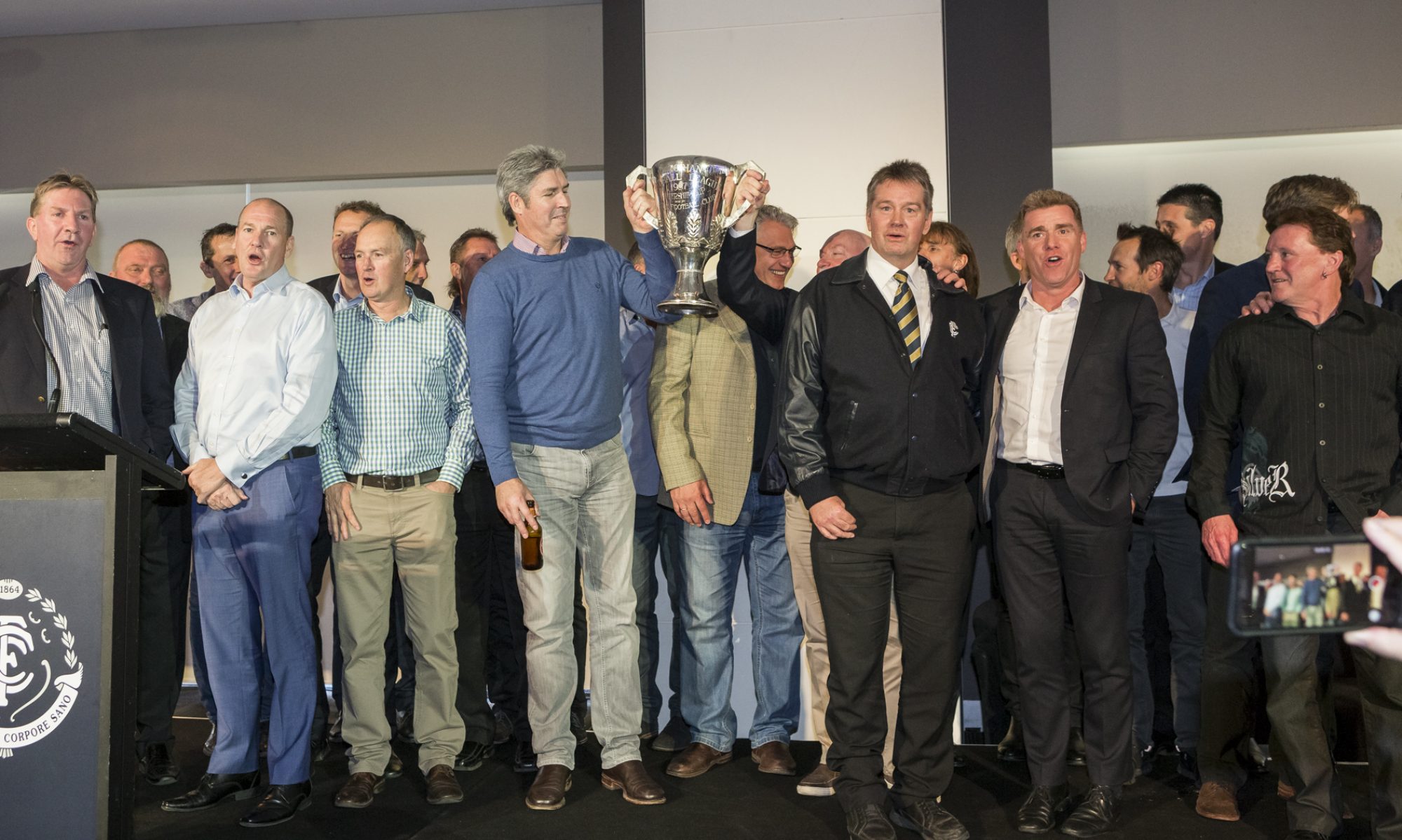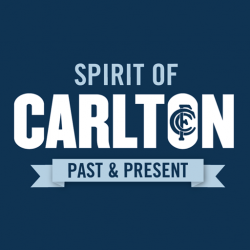Greg Williams
 Career : 1992 – 1997
Career : 1992 – 1997
Debut (Carlton): Round 7, 1992 vs Footscray, aged 28 years, 216 days
Carlton Player No. 983
Games : 109 (Carlton), 250 (career)
Goals : 89
Last Game: Round 16, 1997 vs Essendon, aged 33 years, 293 days
Guernsey No : 2
Height : 175 cm (5 ft. 9 in.)
Weight : 86 kg (13 stone, 8 lbs.)
DOB : 30 September, 1963
Premiership Player 1995
Norm Smith Medal 1995
Brownlow Medal 1994 (Also 1986 at the Swans)
Robert Reynolds Memorial Trophy –Best and Fairest Award: 1994
All Australian: 1993(vc), 1994(c)
Herald Sun Player of the Year: 1993, 1994
Leigh Matthew Trophy AFLPA MVP Award: 1994
Team of the Century: Centre
AFL Team of the Century
Carlton Hall of Fame (Inducted 1999)
AFL Hall of Fame (Inducted 2001)
One of the most brilliant and controversial players of all time, Greg “Diesel” Williams was twice rejected by Carlton as a youngster because he lacked natural leg speed. Nevertheless, he went on to carve his name into AFL history as a champion centreman at Geelong and Sydney, before returning to Princes Park and Premiership glory with the Blues. For sheer ball-getting ability, tenacity, and pin-point disposal by hand or by foot, Diesel Williams had few peers.
While growing up in suburban Ascot Vale, Williams was forced to wear callipers on both legs to correct a condition that made him severely ‘knock-kneed’, and he was never renowned for his speed on the playing field. But at the age of 10, he and his family moved to Bendigo, where the sports-mad youngster turned up looking for a game at Golden Square, and began a football journey that most youngsters dream about.
In 1980, aged 16, Williams was selected in the Victorian Teal Cup (Under 17) squad. This led to an invitation from Carlton to join in pre-season training in 1982. But Greg’s sojourn in Melbourne turned into a disaster. Homesick, and unable to cope with the intense competition for places – even in intra-club practice matches – he was soon informed by letter that Carlton no longer required his attendance.
While deeply disappointed by his failure to cope with the pressures of league football, Williams was still convinced that he was good enough to make the grade. He went back to Golden Square, where he had a dominant year in the centre for the Bulldogs, and won the Bendigo League Best and Fairest award by a record margin. When this was pointed out to Carlton, the club promptly reconsidered, and asked him back again for the 1983 pre-season.
But as before, all the Blues training staff could see was a short, somewhat pudgy individual, who trailed off in every time trial. He was tried as a half-forward flanker, not in the pivot, and while some were impressed with his instinctive, accurate hand-passing, and his neat foot skills off both sides of his body – it was generally agreed that there was really no place for Greg in the powerful Carlton side. For the second year running, he packed his bags and went home to Bendigo.
That second rejection could have crushed Williams’ spirit – instead it ignited his determination to prove the bastards wrong. He dedicated himself to training harder and longer than ever, and in September, won the BFL Best and Fairest award for the second year running. Golden Square then met Sandhurst in the ’83 Grand Final, and lost a torrid match by one kick. Best on Ground in the centre for the Bulldogs was 20 year-old Greg Williams, and watching on from the grandstand were two officials from the Geelong Football Club.
Trevor Fletcher
 Career : 1976 – 1977
Career : 1976 – 1977
Debut : Round 17, 1976 vs Hawthorn, aged 22 years, 297 days
Carlton Player No. 861
Games : 4
Goals : 0
Last Game : Round 3, 1977 vs St Kilda, aged 23 years, 198 days
Guernsey No. 33
Height : 192 cm (6 ft. 3 in.)
Weight : 89 kg (14 stone, 0 lbs.)
DOB : 30 September, 1953
Another product of the Bendigo Football League – Carlton’s central Victorian recruiting zone prior to 1985 – Trevor Fletcher played four senior games (all off the bench) in a brief stay at Princes Park in 1976-77. Afterwards, the 192 cm ruckman-defender enjoyed a varied on-field career before turning his hand to coaching. He guided Bairnsdale to a famous Latrobe Valley League Premiership in 1981, and later, took charge of Footscray’s Under 19 squad.
Fletcher began his football journey in his home town of Charlton in northern Victoria, but it was his role in South Bendigo’s 1974 BFL Premiership that really sparked Carlton’s interest. Having agreed to terms with the Blues, he crossed to Princes Park in 1976 and took over the number 33 guernsey previously worn by another Bendigo boy; 1972 Premiership defender Paul Hurst.
Some eye-catching efforts in the ruck with Carlton Reserves ensued, before Fletcher was eventually called into the senior team for round 17, 1976, when the co-tenants of Princes Park – second-placed Carlton, and ladder-leaders Hawthorn – clashed in the match of the day. Sharing the reserves bench with Graeme Whitnall on that Saturday afternoon, Fletcher made it on to the field late in the game to become Carlton’s sixth debutant of the year after Kevin Heath, Tony Pickett, Leigh McConnon, Jim Buckley and Peter Brown. The switched-on Blues were up for the contest, and upset the Hawks by 31 points.
Twice more over the following weeks – in rounds 19 and 22 – Fletcher watched the first bounce from the bench while the Blues kept on winning. Having snatched the minor premiership from the Hawks, Carlton shaped up for the finals with confidence, but Hawthorn turned the tables in a slogging Semi Final in the wet at Waverley. Then a week later at the same venue, North Melbourne inflicted a coup de grace to Carlton’s season – edging out the Blues by a single, heart-breaking point in the Preliminary Final.
Having missed out on a place in both of Carlton’s finals line-ups, but encouraged by winning the club’s Reserves Best and Fairest, Fletcher saddled up for his second season in 1977, and was named as 19th man for his fourth game when Carlton met St Kilda at Princes Park in round 3. Although the Saints had first use of a strong breeze blowing straight down the ground, they didn’t make the most of it. The Blues did, piling on 8 goals in the second term and another 12 after half-time, to smash their visitors by 107 points. Flamboyant ruckman ‘Percy’ Jones was a star for the Blues, before leaving the ground in the last quarter to allow Fletcher to join in the fun.
Sometime soon after that match however, Fletcher changed his mind about VFL football, and advised the Blues that he would not be continuing. A teacher by profession, he subsequently moved to western Victoria, and played good football for a couple of seasons with the Portland Tigers.
In 1981 he was appointed captain-coach of Bairnsdale in the strong Latrobe Valley Football League. Inspired by the potential of two outstanding teenagers in Brian Royal and Tom Alvin, Fletcher brought out the best in the club’s youngsters by challenging them at every opportunity, and the Redlegs came good at the business end of the season to beat Sale by 21 points in a cracker of a Grand Final.
Thanks to the Blueseum for player pics and bios.









